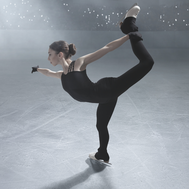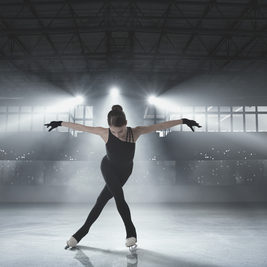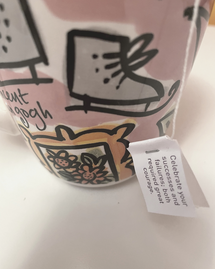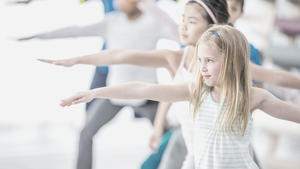 Figure Skater Executing a Spiral Variation Figure Skater Executing a Spiral Variation In last week’s blog I discussed the need for direction in our skating and explained why the common practice of setting SMART goals often doesn’t work for skaters. Without direction, we feel like we are skating in circles, getting nothing accomplished, even while working very hard. It is very frustrating! I’m from Kentucky, so I like to compare it to a thoroughbred–you can be the fastest horse in the world, but if you aren’t trained to run around the track, you can’t run the race. But SMART goals, by far the most common type of goal-setting used, can be harmful for skaters, who are often already highly focused and obsessive, and who thrive on the external validation of achievement. In my experience, the black and white nature of SMART goals creates a lot of anxiety in our already anxious modern beings. If you haven’t read that post, you can find it here. Instead of setting SMART goals, I encourage skaters to set intentions. By definition, an intention is a plan to think and act in a certain way, preferably in alignment with a greater principle or purpose. It involves staying focused and mindful in the present moment, rather than on the future or the past. Since an intention focuses on the present, it comes from the idea that we are already whole because we are all of a divine nature. The idea is that our intended action or thought is already within us… our purpose is to practice bringing it to light simply by getting to work. As always, the practice IS the path. What is a Good Intention for Skaters?In yoga, an intention is also called a Sankalpa, which can also be translated as a resolve or a vow to be upheld above all others.
This doesn’t mean that we forget all our other obligations and become single-minded to the point of obsessiveness (remember–we are trying to leave behind the obsessiveness of SMART goals). It means that we will be resolved to have one mindset or one purpose for each practice or period of practice–whether that period is a season, a month, a week, a day, or an hour. If you really have one quality you want to cultivate in your life, maybe your intention is one word for a season at a time. An example of this is how I choose a word of the year instead of choosing a list of resolutions–abundance, love, courage, flexibility, etc. Then I try to make sure my thoughts, choices, and actions are in alignment with this word. If you practice for many hours a day, you may have one purpose for each session. It can be a word–maybe you choose one of the yamas–or a positive statement or affirmation, such as “I use my breath to stay calm when I run into traffic during my program,” or “I am aware of my self-talk.” You can even make a positive statement about an element you really want to develop–i.e. I easily execute 9 revolutions on a forward camel spin. On your first session, you can focus on program run-throughs and all that entails, and on the next session, you focus on exercises for the camel spin.
0 Comments
 Female Figure Skater in an Opening Pose Female Figure Skater in an Opening Pose For the past several years I have really struggled with focus. I was miserable–my brain darting between tasks, unable to focus on any one thing for more than a few seconds at a time. During the act of teaching things felt fine–it’s naturally faster paced–but sitting to work at a computer for my other job, for writing, or for planning was challenging in a way it never had been. Even though I rarely eat processed foods, aim to get enough sleep, practice meditation, exercise, and drink enough water, I just… couldn’t. be. efficient. I knew something was off, but I still felt like a failure. Then, I read somewhere that “systems will beat hard work and talent every time”. And I realized that I wasn’t failing, but I certainly was spinning my wheels. I think it’s safe to say that, in 2023, the vast majority of humans struggle with focus. It’s impossible to process information as quickly as technology throws it at us. We can’t keep up with our obligations because our brains simply haven’t evolved as quickly as society demands them to. Add in processed foods, lack of sleep, the chaos of the world, and the frenetic pace of achievement we are compelled to follow, and our brains are in crisis. I needed a system and tools to help me dedicate time to do the work that really mattered most – like writing these blogs for the skating world – and to block out distractions. So, I went to work finding tools to help streamline my processes and started practicing their implementation, and I plugged in breaks throughout my day to allow my brain to reset in between tasks. This process has reminded me so much of skating. We’ve all seen skaters spin their wheels on the ice–they get so bogged down with what needs to be done that they move from one thing to the next with no focused effort to make any improvement. Or even worse, they fail to do anything because deciding where to begin is too difficult! In getting to work, it’s all about using your energy in the right way - Brahmacharya. (A few weeks ago I wrote about the yamas - a code of conduct presented to us in the 8 limbs of yoga… Brahmacharya is one of the yamas. You can read more about it here.) Coaches know this, parents know this, and deep down, skaters know it, too. But for it to click and to get a system in place can be very challenging. Enter the SMART goal. 3/18/2023 1 Comment Failing a Figure Skating Test Yogi Tea reminds us to celebrate both our successes and failures Yogi Tea reminds us to celebrate both our successes and failures I wish I had failed more as a skater. Of course, I experienced minor failures every day in practice as I worked to achieve new skills, but not until the end of my career did I fail a test. Most things in skating can only be really learned by doing, and sometimes things don’t really click until you start to learn something even harder. Take jumping, for example. At some point, in order to begin learning a double jump, you have to say that the single is good enough. You continue to work on the single, but you can move on. However, I used to get so angry at myself for making mistakes in practice and needed my skills to be so perfect, that I wouldn’t allow myself to move on to learn new things. I was so terrified of making mistakes, that I stunted my progress and robbed myself of the joy of achievement. Instead, I turned achievement into obligation and a requirement for proving my worth as a human. We can go more in-depth about the pitfalls of perfectionism in a later post, but I will say that the best skaters are the ones who take risks and don’t let failure stop them from trying. They are the ones that can hustle and skate with abandon and really push their limits. So why, then, as a society, do we only celebrate our successes? 3/10/2023 0 Comments Learn to Land with Eagle PoseI wasn’t taught to cross my legs in a jump until I was 13 and started training in a different city. My first coaches were good-hearted people with a love for skating whose techniques had come from a different era. I was learning to jump like Sonia Henie.
I am a daughter of teachers, so I always see things from the teacher’s point of view, and I wanted to trust my coach. But I watched a lot of skating on TV in the 80s and paid attention to the good skaters, so something didn’t seem right. When the technique didn’t make sense, I knew there was deeper instruction to be found. Once I began crossing my legs, it was like a whole world of possibilities opened up. I actually started to land some jumps! Maybe this is why I love exercises that work on back spins and crossed legs so much. They bring me back to that light bulb moment when my skating world changed forever.  Young skaters practicing yoga Young skaters practicing yoga Whether you are focused on athletic achievement or life lessons, creating a safe space is crucial for the well-being of everyone involved. As a skater, I trained in environments that, from the outside, appeared healthy and safe. There was no physical or sexual abuse that I am aware of, and there was none of the heinous screaming and name-calling that still exists in many rinks. However, when I was younger, my coaches behaved like mean girls in club politics and created ugly rivalries where there should have been collegiality and friendship. Later, at a different facility, my peers had weekly weigh-ins, and I was applauded and revered for drastic weight loss that led me down a decades-long path of eating disorders. In yet another facility, I was made to feel like an imposter–just a “tester” among those actively competing. As a coach, I have always tried very hard not to repeat the mistakes of my teachers. Most of them were good-hearted with good intentions, even if they were often blinded by their own competitive nature and their own past wounds and teachings. So, without a good model in my background, I repeated some of the same mistakes. Pushed kids when they didn’t need to be pushed, compared skaters to one another when I shouldn’t have, offered dietary advice without being a licensed dietitian and tried to convince a skater to stay in the sport when what she really, really wanted was to be done. For many years I coached in an environment that closely followed Safesport guidelines. Yet, it didn’t feel healthy and was arguably quite harmful to me and many others. Playing favorites, forming cliques, ignoring skaters who need extra emotional support, and politicking amongst coaches are surefire ways to ruin a healthy, collegial environment. While Safesport and SkateSafe attempt to prevent and prosecute the most egregious acts of abuse in our sport, they fall short in many ways, especially in instances of emotional abuse. Their shortcomings are beyond the scope of the post, so I will simply say that I believe we need good models of conduct and spirit that go deeper than US Figure Skating’s Code of Conduct and the PSA’s professional standards. |
Author // the skating yogiMy name is Sarah Neal. I have been immersed in the world of figure skating for over four decades. I have seen firsthand the abuse that happens at the higher levels of our sport and experienced how that trickles down into unhealthy training practices and habits at the grassroots. I have seen this play out in the operations of the very institutions that control our sport. Whether for a profession or hobby, pursuing skating should be a joyful, rewarding process, an opportunity for athletic and personal growth, and a place to build lasting friendships. Archives
March 2024
CategoriesAll Athlete Well Being Athlete Well-Being Deep Connections Embodied Movement And Meditation Practices Life After Competition Mindful Living |
Search by typing & pressing enter

 RSS Feed
RSS Feed